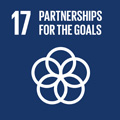- Docente: Pina Lalli
- Credits: 4
- SSD: SPS/08
- Language: Italian
- Teaching Mode: Traditional lectures
- Campus: Bologna
- Corso: Second cycle degree programme (LM) in Media, Public and Corporate Communication (cod. 5703)
Learning outcomes
Students can learn to analyze the public sphere in a sociological perspective, considering the building processes of social knowledge of public issues in contemporary hybrid media landscape, included the roles of algorithmic sources and the new global subjects acting in the online communication.
Course contents
The "integrated course" is named Public Sphere and information, within it we have two parts linked together. Therefore it is important to consider both programs as interconnected.
1. In Theory of the public sphere we introduce:
1.1. The main aspects of the debate on the space where the public opinion is formed, starting from the famous Habermas' analysis
1.2. The contemporary controversies about the relationships between public sphere and media, particularly with the mediated online interaction, following the John Thompson's definition
1.3. The social building of public problems: which arenas, which actors, which mechanisms.
2. Practices and techniques in information will compare the hypothesis of the first part, aiming to highlight the empirical problems and the less or more resilient procedures to answer them. The professional routines of journalism in the contemporary hybrid media will be presented and discussed, also by invited experts.
Readings/Bibliography
Main Syllabus
- J. Habermas, The Public Sphere: An Encyclopedia Article, in "New German Critique", n.3, 1974, pp. 49-55.
- A. Bruns, Gatewatching and News Curation, Journalism, Social Media, and the Public Sphere, New York, Peter Lang, 2018
- M. Hindman, La trappola di Internet. Come l'economia digitale costruisce monopoli e mina la democrazia, Torino, Einaudi, 2019.
Readings for workshops (v. "Teaching Methods")
- AgCom, L'informazione alla prova dei giovani, Report 2020 (e altri report AgCom di cui si discuterà in aula)
- J. Allen , B. Howland, M. Mobius, D. Rothschild , D. J. Watts, Evaluating the fake news problem at the scale of the information ecosystem, in "Science Advance", n. 6, 3 Avril 2020, pp. 1-6
- E. Bell and T. Owen, The Platform Press: How Silicon Valley Reengineered Journalism, in "Columbia Journalism Review", 29-3-2017
- M. Coddington,Clarifying Journalism’s Quantitative Turn. A typology for evaluating data journalism, computational journalism, and computer-assisted reporting ], in "Digital Journalism", 3, 2015, pp. 331-348.
- N. Marres, Why We Can't Have Our Facts Back, in "Engaging Science, Technology, and Society", n. 4, 2018, pp. 423-443
- Reuters, Digital News Report 2019.
- E.C. Tandoc Jr., Zheng Wei Lim & Richard Ling, Defining Fake News, in "Digital Journalism", vol. 6, n. 2, pp. 137-153 (accessibile in Unibo via EZproxy )
- J. B. Thompson, Mediated Interaction in the Digital Age, in "Theory, Culture & Society", vol. 37n. 1, 2020, pp. 3–28
- J. Vásquezz-Herrero, S. Direito-Rebollal, X. López-García, Hephemeral Journalism: News Distribution Thorugh Instagram Stories, in "Social Media + Society", October-December 2019, pp. 1-13.
Teaching methods
Lessons in class, with contemporary webinars online, always available also for online attendance.
The two parts of the "integrated course" are integrated also in the lessons and the interactive workshops: a more detailed calendar will be available at the beginning of the course, included the presence of invited experts and professionals.
The participation to the interactive workshops will be proposed and discussed in the first week, for establishing an educational agreement with the students.
Assessment methods
The exam is the same for the integrated course.
Attending students (online and offline) (i.e. participation to at least 80% of the lessons/workshops):
1. Active and positive participation during the workshops and the webinars: 30% of the final grade
2. Written paper following the agreements with the teachers during the workshops: 70% of the final grade
Students not attending the class:
Written exam consisting of closed and open questions based on the the 3 readings listed in the main ssyllabus, plus the paper by Tandoc listed above.
Teaching tools
Online platform for the webinars, slides, videos.
Office hours
See the website of Pina Lalli
SDGs


This teaching activity contributes to the achievement of the Sustainable Development Goals of the UN 2030 Agenda.
